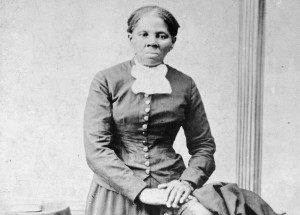
Tubman for the $20
The life and actions of Harriet Tubman send a clean, laser-like message to us straight from the 19th century. Let the presses roll.
In some of the grainy, black and white portraits, Harriet Tubman is staring off into the distance, mouth firmly set, brow furrowed. It’s a face showing someone who still has fight in her.
In others, she’s looking directly at the lens. In a few of these, Tubman has the faint suggestion of a smile, a tiny softening around the hard eyes. It suggests someone who, late in life, has known and somehow reconciled the basest instincts of humanity with the grace of struggle for good.
Portraits from the 19th and early 20th century often look severe. People tended to stand straight and still because the exposures were so long.

I’m betting the Harriet Tubman Wikipedia page is the most-visited this week, at least in the United States. Many years have passed since I last read about Tubman. What a story! An intervening century punctuated by contemporary civil rights crusaders have dimmed the memory. Luckily a well-researched book about Tubman, by historian Catherine Clinton, was published in 2004. The life and actions of Harriet Tubman send a clean, laser-like message to us straight from the 19th century. Facing and enveloped by evil, Tubman exerted herself mightily against it for most of her 90-some years.
Now, as everyone knows, Treasury Department policy will honor Tubman by adorning the $20 bill with her portrait. Old Andy Jackson gets relegated in smaller form to the back of the bill. Whomever the Bureau of Printing and Engraving chooses to translate Tubman’s likeness into an egg-slice sized portrait will have his or her work cut out. No stick figure, Tubman was a complex, three-dimensional figure in life, hard to capture in an engraving.
Tubman was something of a surprise choice. The Obama administration had determined to change the money. Many of the possible choices might have offended large numbers of people. But, given that images on the money will no longer exclusively be presidents but also other American historical figures, Tubman seems like a good pick.
I find an interesting coincidence that the choice of Harriet Tubman for the 20 comes from Treasury Secretary Jack Lew, an Orthodox Jew, just before the eve of Passover, the universal story of liberation from enslavement. Indeed, Harriet Tubman colleagues in the Underground Railroad nicknamed her Moses.
Although she never got full credit for it, she was also a veteran. During the Civil war, she led an armed slave-freeing expedition in South Carolina. She knew how to handle a gun. Above all Tubman was gritty and brave, and she could navigate woods and marshes by the stars at night. Let the presses roll.
Copyright © 2025 Federal News Network. All rights reserved. This website is not intended for users located within the European Economic Area.
Tom Temin is host of the Federal Drive and has been providing insight on federal technology and management issues for more than 30 years.
Follow @tteminWFED
More commentary from Tom Temin:





